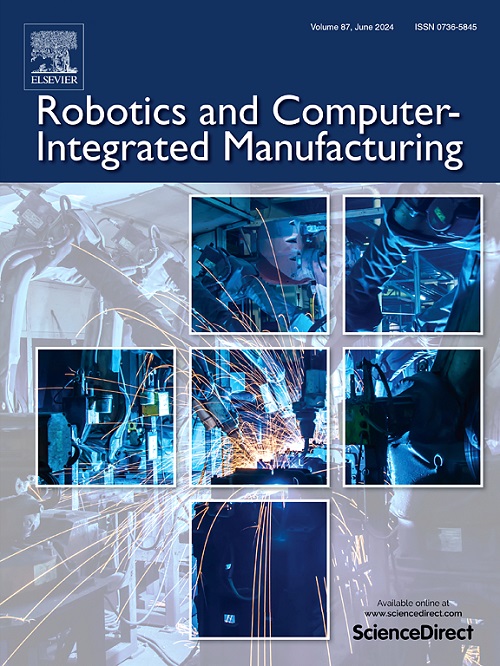Posture optimization for improving the kinematics performance of robotic polishing under combined constraints by using a KC-ADP method
IF 11.4
1区 计算机科学
Q1 COMPUTER SCIENCE, INTERDISCIPLINARY APPLICATIONS
引用次数: 0
Abstract
The flexibility of industrial robots in posture adjustment has driven their widespread adoption in polishing applications, providing an effective means to enhance machining performance. To satisfy the growing industrial demand for high-quality and high-efficiency machining of complex surfaces, posture optimization must address multiple constraints, including interference-free operation, singularity avoidance, stiffness performance index limits, and the kinematic parameter limits. The simultaneous consideration of all these factors poses a significant challenge, and existing methods do not adequately address the global optimality and the convergence of the solution process. This paper proposes a novel posture optimization model to improve the comprehensive performance of robotic postures by integrating enhancements in both kinematic and stiffness performance under fundamental geometric constraints. An efficient and stable algorithm, designated as Kinematics-Constrained Adaptive Dynamic Programming (KC-ADP), is developed to solve the optimization problem. First, the combined constraints are modeled based on the robotic polishing system. Next, feasible posture solutions corresponding to different redundant parameters are collected according to machining requirements and transformed into a directed graph using the proposed Multi-Constraints Search Space Generation (MCSSG) algorithm. The optimal posture sequence is then obtained through adaptive dynamic programming, ensuring the availability of feasible postures at each step and resolving the conflict between multi-order kinematic constraints and the objective function. A series of simulations and experiments were conducted to validate the proposed method and the results demonstrate that the proposed approach significantly improves machining performance.
基于KC-ADP方法的组合约束下机器人抛光运动学优化研究
工业机器人姿态调节的灵活性推动了其在抛光应用中的广泛应用,为提高加工性能提供了有效手段。为满足日益增长的工业对复杂曲面高质量、高效率加工的需求,姿态优化必须解决无干涉、避免奇异、刚度性能指标限制和运动参数限制等多重约束条件。同时考虑所有这些因素是一个重大的挑战,现有的方法不能充分解决全局最优性和解决过程的收敛性。本文提出了一种新的姿态优化模型,在基本几何约束下,通过综合运动学和刚度性能的增强来提高机器人姿态的综合性能。提出了一种高效稳定的求解优化问题的算法——运动约束自适应动态规划(KC-ADP)。首先,建立了基于机器人抛光系统的组合约束模型。其次,根据加工要求,收集不同冗余参数对应的可行姿态解,并利用提出的多约束搜索空间生成(MCSSG)算法将其转化为有向图;通过自适应动态规划得到最优姿态序列,保证了每一步可行姿态的可用性,解决了多阶运动约束与目标函数之间的冲突。通过一系列的仿真和实验验证了所提方法的有效性,结果表明所提方法显著提高了加工性能。
本文章由计算机程序翻译,如有差异,请以英文原文为准。
求助全文
约1分钟内获得全文
求助全文
来源期刊
CiteScore
24.10
自引率
13.50%
发文量
160
审稿时长
50 days
期刊介绍:
The journal, Robotics and Computer-Integrated Manufacturing, focuses on sharing research applications that contribute to the development of new or enhanced robotics, manufacturing technologies, and innovative manufacturing strategies that are relevant to industry. Papers that combine theory and experimental validation are preferred, while review papers on current robotics and manufacturing issues are also considered. However, papers on traditional machining processes, modeling and simulation, supply chain management, and resource optimization are generally not within the scope of the journal, as there are more appropriate journals for these topics. Similarly, papers that are overly theoretical or mathematical will be directed to other suitable journals. The journal welcomes original papers in areas such as industrial robotics, human-robot collaboration in manufacturing, cloud-based manufacturing, cyber-physical production systems, big data analytics in manufacturing, smart mechatronics, machine learning, adaptive and sustainable manufacturing, and other fields involving unique manufacturing technologies.

 求助内容:
求助内容: 应助结果提醒方式:
应助结果提醒方式:


